Preface
Born in Peshawar, and brought up in North India, I had seen very few South Indians during my childhood. And the only Christians we saw were either Anglo-Indians or teachers in the elite schools. All this changed, when I joined the NDA, in Jan 1958. I met Thomas, and I got to know all that I know on these issues, now.
Last week, Brig Surinder posted his Kerala travelogue on this blog, and it has generated a lot of interest. Purely from the military point of view, Kerala is a very important state. In terms of area and population, it is a small state. Of the five major south Indian states, Kerala has only about 13 % of the population, and yet, over 40% of our military pensioners reside in this tiny region. It is also a well-known fact that a very large number of Malayalis have shifted out of their home state.
I requested Thomas to do a bit of research on Kerala and its people. The end result of his labour of love is given below. It has been laid out in such a manner that you can get a gist of his findings within five or seven minutes. And if you wish to go into the details of any specific topic, you can click on the link and get all the information which you need. Kerala is a unique region. Its villages are like mini-towns and the cities are not as large as the metropolitan conglomerates in the other cities.
As a child, I was told that Islam was forced on the Indians by the Muslim invaders and Christianity was brought by the British rulers. It came to me as a complete surprise, when I learnt that Christianity in South India came before it reached Britain!
Now, over to Thomas. His roots are in Kerala, but he lives in Bengaluru and all his children have migrated to the USA. In due course of time, his offspring may not even be able to understand their ‘mother-tongue’!
*
Geography and history have conspired to make Kerala distinctive.
By Wg Cdr Joseph Thomas, VM
According to legend, Lord Parasuram threw his axe into the sea which receded and created Kerala and Konkan.
Full story at
Kerala is blessed with rich soil, a tropical climate and plenty of rainfall. It, therefore, attracted raiders and migrants from the arid region of Madurai. They established the independent kingdom of Travancore. Migrants from the north settled and took over the region from Gokar-nam to Kasargode. In recent centuries there were three regions — Travancore and Kochi kingdoms and Malabar. The last was ceded by Tipu Sultan to the British who merged it with the Madras Presidency. The present state of Kerala was formed on 01 Nov 1956 as a result of states re-organisation.
Monsoon in Kerala
Kerala has been a prominent spice exporter since 3000 BCE. By the time pepper was transported to Europe and sold in retail, it was worth its weight in gold. It went by the sea route upto Egypt, then overland and again by sea. Opening up of the sea route in the late 15th century increased the spice trade and brought more Europeans to India.
Spices Trade Routes in Ancient Times
Spices of Kerala
Kerala was never ruled by any of the empires of North India, be it the Mauryas, the Guptas or the Mughals. Even the Marathas who ruled up to Madurai never came to Kerala. And the British were allies, not rulers.
Nevertheless, Kerala has always been culturally in the Indian mainstream. And it was Shankaracharya of Kerala who is credited with unifying and establishing the main currents of thought in Hinduism. He travelled across the Indian subcontinent on foot to propagate his philosophy through discourses and debates with other thinkers. India was a Buddhist country for about 1000 years and it was from Kerala that Hinduism spread outwards, replacing Buddhism. Shankaracharya is credited with establishing, or expanding, the four dhams of Badrinath, Dwarka, Puri and Rameshwaram. Even today the head priest of Badrinath is traditionally a Nambudiri Brahmin from Kerala.
Char Dham Ka Darshan
Today Kerala has three main religions – Hinduism, Islam and Christianity. Unlike other parts of India, all three communities are of roughly equal numbers and influence. All three communities live in harmony. Christianity has extremely ancient roots in Kerala, being introduced by St Thomas, one of the 12 apostles of Christ.
Kerala has always been a seat of learning. A school that flourished in the 14th-16th centuries was the Kerala School of astronomy and mathematics, founded by Madhava of Sangamagrama. His followers included Nilakantha Somayaji, Jyesthadeva and Sankara Variyar. In attempting to solve astronomical problems, the Kerala School independently created a number of important mathematics concepts. The fundamental elements of calculus including numerical integration methods and infinite series derivations for pi and for trigonometric functions such as sin x, cos x and tan-1 x (the so-called Gregory series) were all discovered.
Recently, there has been some acknowledgement of these facts outside India.
See for e.g. BBC – History of Indian Mathematics Part-2 of 2. (From 2:53 onwards, it is mainly about the Kerala School of Mathematics.)
History Of The Kerala School Of Mathematics
Modern education came to Kerala much before the rest of India. The rajas were benevolent and far sighted. Girls’ education, which is key to literacy, was encouraged by them. As a result, Kerala continues to have the highest literacy rate in India. A fallout of this is that Kerala has long had a balanced gender ratio.
Kerala was mainly an agricultural region. The global depression of the 1930s caused deflation and great distress. That was the start of the diaspora which continues till today. Also, the growth of Communism forced many families to migrate. Today, the metro cities of Mumbai, Delhi, Chennai and Bangalore each have a greater population of Malayalis than Thiruvananthapuram.
A counter current of migration is a recent phenomenon. Today 10 % of the population consists of migrants from Nepal and Bihar.
Kerala has jumped from agriculture to a service economy, more or less bypassing the industrial age. There are, however, pockets of industry like ship building at Kochi. Here is an example of combining the ancient with the modern :
Synthite – the world’s largest producer of value added spices.
http://www.synthite.com/synthite/our-story/history
In Kerala, each family lives on their own land. Thus, unlike in the rest of India, there are no crowded villages. Instead there is a vast semi-urban area. This may also be the reason why Malayalis are not servile. They do not treat their employers or bosses as demi-gods.
The oldest battalion of the Indian Army is 9 Madras. Raised as personal bodyguards to the Maharaja of Travancore in 1704, it grew into the “Nair Pattalam” (Nair Army). They defeated a Dutch invading force at Colachal in July 1741. Capt Eustachius De Lannoy, the Dutch commander, surrendered and joined the Travancore Army. From 1741 to 1758, Capt De Lannoy was in command of the Travancore Forces and led the northward expansion of the kingdom.
De Lannoy’s Surrender at the Battle of Colachel
More at http://pazhayathu.blogspot.in/2011/09/nair-soldiers-of-travancore-and-their.html
On capture, Capt De Lannoy was initially detained in this house belonging to Ayyappa Marthanda Pilla, commander of the Nair Pattalam. Pic shows one of his direct descendants, Wg Cdr (Retd) K T Sudhir & Mrs Sudha Sudhir.
Commemorating the victory of Maharaja Marthanda Varma over the Dutch at the battle of Colachel, after which the Dutch never came to India.
Sub-titles tell the story of the Battle of Colachel
Colachel Natural Harbour and the Victory Pillar, Kanyakumari
The “Nair Army” became incorporated into the Indian Army in April 1951. 9 Madras has the rare distinction of never being disbanded, retaining their identity throughout.
The Pazhavangadi Maha Ganapathy temple is situated in the heart of Thiruvananthapuram city. The main deity of the temple is Sri Mahaganapathy (Ganesha). The original Idol was maintained by the Nair Pattalam at Padmanabhapuram. On shifting to Thiruvananthapuram in 1795 they established the current temple. Following integration of the Travancore army with the Indian Army in 1951, the temple is maintained by the Madras Regiment.
Video story on Pazhavangadi Ganapathi Kshethram. (Sorry, no sub titles in English)
The palace at Padmanabhapuram, now in Tamil Nad
King Marthanda Varma dedicated the kingdom to his family deity Sree Padmanabha, a form of Lord Vishnu and ruled the kingdom as Padmanabha dasa or servant of Lord Padmanabha. Hence the name Padmanabhapuram or City of Lord Padmanabha. In 1795 the capital was shifted to Thiruvananthapuram. The palace complex continues to be one of the best examples of traditional Kerala architecture. Though now in Tamil Nad, it remains under the ownership and control of the Kerala government.
Sree Padmanabhaswami Temple and Travancore History
Not everything is hunky-dory in Kerala. It is a leader in hartals, consumption of liquor, road accidents and divorces. An all too common family story in Kerala goes like this :
Man gets job in the Gulf, gets married and has two adorable children. Mom and children stay back in Kerala for their education. Son is pampered and gets motorbike as a teenager. Son is killed in a road accident. Mom has morose look for the rest of her life.
Back to happier things: Onam is the most important festival of Kerala. It is a harvest festival and is celebrated with joy and enthusiasm all over the state by people of all communities. According to popular legend, the festival is celebrated to welcome the good King Mahabali, whose spirit visits Kerala at the time of Onam.
Onam – Nehru Trophy Boat Race | Aerial (Drone) Video
More videos :
Introduction to Coastal Kerala
Devushkas Visit Kerala
Thekkady
Munnar Parts I & II
Angry Elephants
A Jungle Resort on the Kerala – Tamil Nad Border
http://wildplanetresort.com
Athirappilly Falls is situated in Thrissur district of Kerala. Located on Chalakudy river this 24-metre (80 ft) waterfall and the nearby Vazhachal Falls are popular tourist destinations.
Kochi — Queen of the Arabian Sea
Kalaripayattu Kerala Martial Artform
Kalaripayattu Hand-to-hand Combat.
Author at the victory pillar at Colachel. In the background are the ruins of a courthouse and jail.
The Tailpiece
It does not take a very long time for a culture to change. Twenty or thirty years is a period long enough for things to change.
I was in West Bengal during 1971-72. I saw the Naxal movement transform the State from an Industrial hub of the country to a communist regime. During the same period, the refugee influx from East Pakistan caused havoc. Within ten years, all the Industrial houses shifted their corporate offices from Calcutta. And that flourishing capital of the British Empire turned the glorious town into an outsized slum.
Kerala was the only other state in India to be affected by this ideologue. As of now, there is no major industry operating in Kerala. In one of his mails, Thomas summed it up in just one sentence:
“Kerala is a nice place…but I would not like to ‘live’ there!”

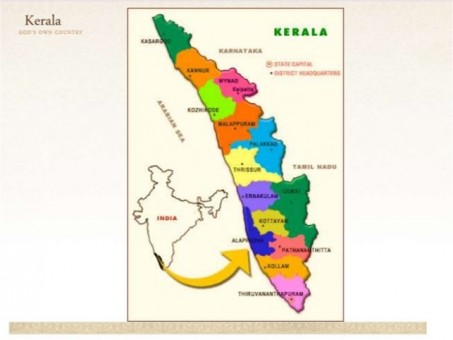

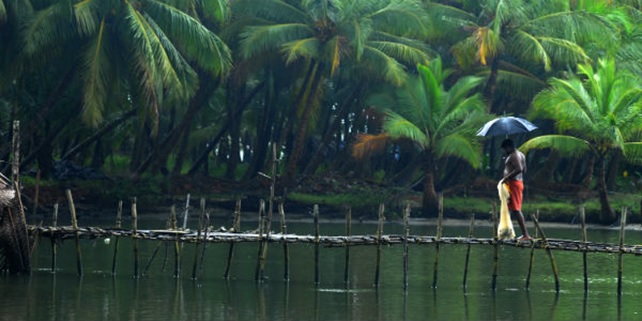

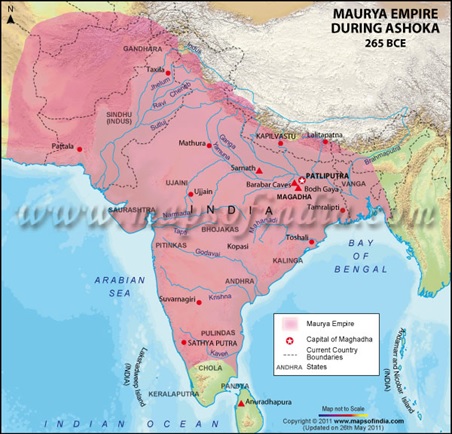


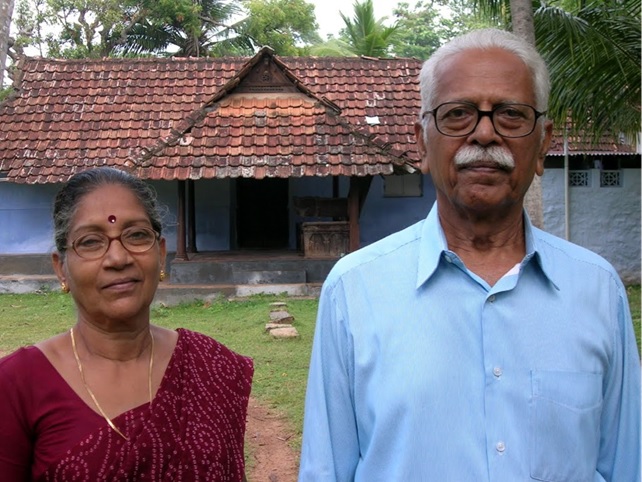
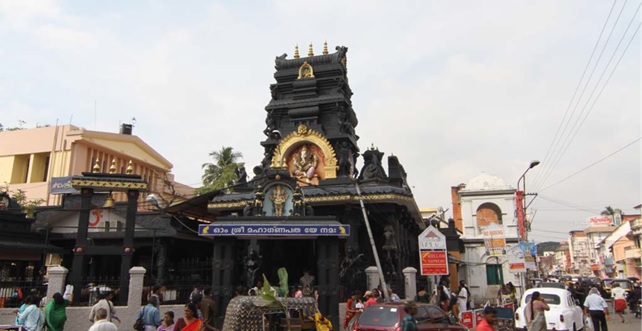
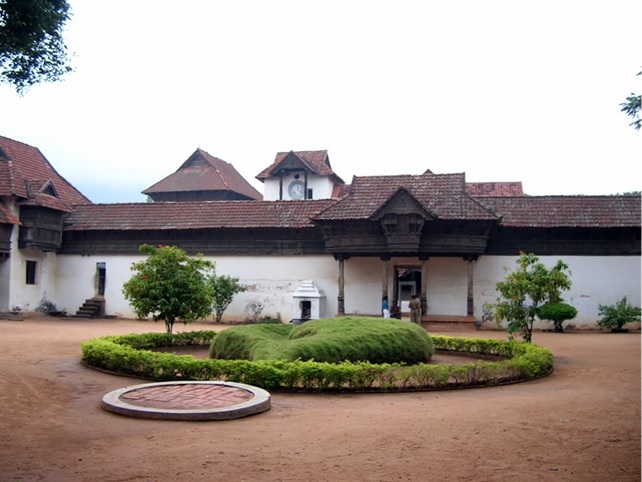
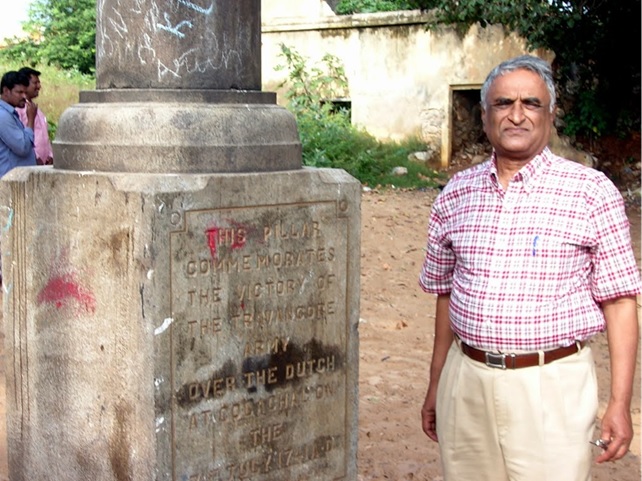





Great Joseph,
From 1973 to 1984, every year I had the assignment of spraying prophylactic chemicals on rubber plantations, by chopper, during April and May, all through the God’s Own Land. The lush greenery, aromatic air, serenity of the plantations coupled with backwater fish meals are incomparable.
In admiration of your, a piece from the master of perfectionism.
soorkhan.
Lovely piece ! Wikipedia would do well to update their coverage of Kerala based on this write-up
Brig Surinder Singh
Read with interest Gen Surjit’s travelogue about Kerala; and also the subsequent essay by Wg Cdr Joseph Thomas, VM on what he understands as the geographical & historical factors that led to Kerala becoming what it is today. (The anti-climax come at the last line of the essay by Thomas that reads, “…but I would not like to ‘live’ there!”)
Before I seek to explain this paradox, a few lines about me.
I was born in Trivandrum, Kerala, and lived there for the first 11 odd years of my life. Then I moved to Ahmedabad with my parents and sisters, and later after graduation at the Gujarat University, joined the Corps of EME, Indian Army. I took premature retirement in 1996, and then for the next 15 years worked with 3 private software companies — the last of them based in Trivandrum. After a along gap, I came back to Trivandrum in 2005, and am now permanently settled in this city. Yes, I would rather stay in Kerala than anywhere else!!
Let me begin with two facts that got left out in the earlier two essays about Kerala.
a) In 1963, Kerala was the 3rd poorest state in India — with visible poverty, and streets replete with destitute beggars. (Refer to an Interview with Amartya Sen at https://qz.com/557199/amartya-sen-india-cant-become-a-global-economic-power-with-an-uneducated-unhealthy-workforce/)
b) By 2011, Kerala has already caught up with the richest states in India in terms of Per Capita Income/GDP, as per the UNDP Publication of 2011 titled, “Inequality adjusted Human Development Index for India’s States”. (Refer to table at page 18 of the pdf file that can be downloaded from the link http://www.undp.org/content/dam/india/docs/inequality_adjusted_human_development_index_for_indias_state1.pdf).
The above is not a mere statistic. Today, even casual visitors to Kerala as struck by the near absence of abject poverty and street beggars. Many of them assume that this is due to the natural bounty that the state enjoys by way of plentiful rains and consequent greenery.
The above assumption is obviously naive. With the same resources, poverty was rampant in Kerala till the 1960s. It is true that even then, the southern regions of modern Kerala, though with widespread poverty, enjoyed higher standards of literacy and health standards than the rest of India, including the very backward northern region (Malabar, that was integrated within Kerala only in 1956, having been directly under the British rule before independence). Indeed, the catch up of Malabar with South Kerala — both in terms of social and economic indicators — is among the more amazing achievements of the “Kerala Model”!
Thus, some kind of explanation is required to understand how Kerala has managed to successfully tackle the problem of poverty, even as it started off as one of the poorest states in India. And we need an explanation as to how today, Kerala is among the richest states in the country.
Amartya Sen’s view (as indicated in the interview that I linked earlier) is as under:-
//
Q: India has a lot of lessons to give the rest of the world and vice versa, but you write about how India can learn from itself—could you tell us more about that?
Sen: Look at Kerala’s policy for universal education and universal healthcare. The Communist Party first come into office in 1957; they declared their policy in 1960. (In) 1963, I’m in Delhi teaching at the Delhi School of Economics (DSE) and people ask me, “Do you think it’s feasible?” I said “absolutely feasible.” Primarily for one economic reason, namely that you need far less money than you would need in, say, Britain to provide that level of healthcare and education.
This argument is not very sophisticated, but, on the other hand, it could make a dramatic difference between life and death. Many of my colleagues at DSE said that I’m just leading people up the garden path, as an economist I should criticise, because Kerala was the third poorest state in India then. How could they afford it? And my claim was the economic argument. Also, there being externalities and the “public good feature” as economists call it.
I was certain that on top of that, for reasons which we began with, that the policies would also stimulate economic growth and development. In the latest round of national sample survey, if you put the urban and rural together, Kerala has now the highest per capita income in the whole of India. I would have thought some people who thought I was leading people up the garden path would say that they were mistaken. Have I got such statements? I’m afraid I have not!
Am I happy that my expectations have been fulfilled? Yes, very happy indeed. Not for myself, that’s a trivial thing. But the fact that a people-friendly education and health policy could make a difference, not only to their lives—which happened immediately, life expectancy shot up in Kerala straight away—but also ultimately on economic growth.
//
There is another reason that is often given to “explain away” the exponential rise of Per Capita GDP and Per Capita Income (so drastically contrary to the predictions of doom by many). This is, “remittances from abroad” — as if that is some kind of foul play!
A good briefing of thousands of years !
Hope all have enjoyed it.
There is an art festival just now in Kochi… the Biennale. The first hosting was two years ago and was well received, so it was decided to continue. The present one posts a lot on FB, but I have not paused to read. All modern art and has brought in lots of artists and tourists, so they have decided to continue with it.
Venice has an art biennale .
Kerala is different …agriculture was prominent ,and clusters of houses into a village is not seen as in T Nad.
Houses were farm houses with land around each house. As such each household disposed of its waste in their own grounds.
Composting of land produce , using cow dung ,and ash from the kitchen for fertilising plants around the house…..so organic farming.
Also each house had its own outdoor latrine.
My childhood memory of going to Kerala by overnight train from Chennai is to wake up seeing the lush greenery and beautiful wild flowers along the railway line and knowing instantly that we are in Kerala.
Education and literacy was and is high.
Kerala also benefitted from interracial and interculture mix due to trade across the Arabian Sea and into the East Coast of Africa.
According to Michael Wood,a historian and BBC presenter, the people along the west coast of India are a blend of people , Phoenicians, Africans , Arabs etc. There was also an immigration of Persians into Kerala.
My own conclusion is that Persians who were Cians came to Kerala and Parsees settled in Mumbai.
A Malayalee settled in USA wrote a book saying that Armenians came to Kerala, cos he had a lot of Armenian neighbours ,whose names mostly ended in ..ian ..e.g. Tharian, Cherian, Kurian etc. Modern Armenians have names ending in ian and they are instantly recognised as Armenians.
Then of course Kerala had Jews……And trade with China.
Kanji …is it Chinese or Indian ? Guillain is said to be the Kanji /Congee capital of China. The city has a banner proclaiming this.
The synagogue in Kochi has floor tiles from China, chandeliers from Belgium, and wood used within the synagogue is olive wood from Israel.
Kochi is an ancient sea port and so had several influences .
The king of Kochi let all these people settle so that trade of spices can continue.
BTW…..
.the story is that British stole tea plants from China and took the plants to the hill stations in Malaya, Ceylon ,India and Kenya.
Also stole rubber seeds from (the Portuguese) in Brazil….and brought them to London and onto India and Malaya.
Ships had become faster, and also botanists learnt how to transport plants within large bottles to maintain humidity.
Eventually the rubber from India and Malaya and manufacture of rubber products here killed off the rubber trade from Brazil,as it had to travel a long distance downstream on the Amazon before it could reach the Atlantic..
Dad used to say that the British were very surprised to see Keralans all very neat and tidy in white garments.
One of my friends ,when I worked in Kerala would say that her cook at the end of his day’s work would always bathe and change into white clothes before he left and no one outside the house would ever know that he was a cook .
Mom used to make a ” white lime pickle ” … . somehow this was a Christian recipe! I used to wonder about this until I saw a BBC programme of world food. The Middle East food, and N African food add salted limes to their food. I guess the ones who came to Kerala added green chillies too ( Not red dry chillies as in traditional recipes )
The climate, geography, agriculture plus education and cleanliness marked out Keralans plus of course a very enterprising spirit.
Have forwarded to all my friends.
Thanks. It is awesome
Thanx Surjit. A well researched and well written details of Kerala State.
Thanx to Thomas for educating many like me.
Thomas has put together a great information / insight into KERALA. Typical of friend Thomas ; he excels in whatever he does .
Enjoyed various Videos put together on Kerala. Can be a great help to anyone planning a holiday there.
I don’t have Thomas’s ID . Pl convey my regards and appreciation to him.
Love
3000
cheers to madrasis
Your write-up on Kerala is being forwarded to me from far and wide. As usual, it is very well-written and decidedly educative. Krishna and I enjoyed reading it.
Our compliments to you for a job done well!
Thank you for this great effort, Wg Cdr Joseph. Your contact details please, if you oblige!
Tks,
Capt Sebastian, Indian Navy
Dear Eapen, you may contact me at lynxmail106-ibex@yahoo.com
Alternatively, use the “Contact Us” page on this website.
regards,
J T
Well presented. Proud of you JT
Excellent! Hats off to the hard work and tons of information.
In my army life, I found it quite uncomfortable when senior and responsible officers were quite ignorant (and thus arrogant!) when they dealt with me! May be the food agitations of the Sixties made them use expressions like ‘saala nanga bhookha kaaloo Madraasi”! I, as an officer(!), also suffered some sort of apartheid!
Imagine, in 1976, an youngster granted ten days leave from Leh/Chandigarh to Trivandrum and back. Then it took four and half days to travel one way alone! I declined and it was a news for many when they were told about the time and space!
Now with the Technopark, Naval Academy, the explosion of IT and the advance in air travel facilities, many from the ‘North’ also are getting exposed to Kerala.
I do not why, but Keralites pick up other languages quite fast. Rather, I picked up Punjabi- to read, write and (abuse) albeit with some effort! (There were occasions people resorted to Punjabi and kept on speaking bad little realising that I knew their lingo! On few occasions I had to say their epilogue in their own ‘baani’) All part of life! No complaints! al part of our nation building process!!
Within Kerala, a Keralite thinks no end of himself. Humility is quite alien to them. They do not wish each other- something like Good Morning, Sat siri Akal, jai ram li ki, Ram Ram, Namaste, etc. It is below ones ‘dignity’
If one goes to a government office, eg, a Panchayat or Village Office, take it for granted, one will face insolence, humiliation, insult etc. Thet play fool as if they do not know about the armed forces at all.
I am not ex NDA- no offence meant. I did my MA in Trivandrum. I was in the mainstream of student movements-though with a lot of caution!!
On many occasions i had to ‘come down to their level’ and covey in the language in manner they understand,
Part blame is ours’ We have been using bribe/ liquor to get ‘our’ job done int he army. Be the LAOs, MES accommodation handing/ taking over, CSD, depositing of CLass IV vehicles, for railway accommodations ( it is a fact that we travelled without reservations on duty or on leave with the first class warrant in our pockets) …the list is never ending. SO, the babus expect bribe or booze from us.
Well, well,well! That is our history!
Yet, it is quite heartening to read good things written by people from “UP NORTH” about our small Kerala.
Your take on the cultural intake of the present Kerala scenario is informative and an incentive for further forays into our special, exclusive, traditional heritage. Very well presented.
At the moment, I’m more into the difference between ‘Para’ and ‘Apara’ knowledge.
Thanks. I had no clue about ‘Para’ and ‘Apara’ but Wikipedia came to my rescue.
“The aim of integral education is to integrate all dichotomies, to integrate the material and spiritual dimensions of the human personality; it does not recognize the description of vidya as Para Vidya (higher spiritual knowledge) and Apara Vidya (the knowledge of the senses and the surface mind) because the latter without the light and influence of the former is avidya or false knowledge.”
“Integral Education Thought and Practice”
By R.N. Pani quoted in
https://en.wikipedia.org/wiki/Para_Vidya#cite_note-12
Thanks Tommy Sir. A lot of interesting reading. Will circulate to the fold.
I have been to Cochin and Periyar / Munnar/ Guruvayur and more recently to Wayanad.
I am an animal lover, more so I love dogs, whether pet dogs or strays.
What I don’t like about Kerala is their massive and merciless culling of stray dogs, so brazenly sponsored by their Government. It is for this reason that I have decided never to visit Kerala again.
What are we ? Chinese / Korean / Vietnamese ? Or are we Indian ?
As usual a superb piece by Tommy who I have known since 1954!
We were classmates and lifelong FRIENDS
The fact that malayalis are superb as human resources every where except Kerala is an unexplained social phenomenon!!
Go to the Persian Gulf and you will find that the Malayali is the preferred labour everywhere. The same persons have converted Kerala into a large remittance based economy!
TOMMY—-SUPERB PIECE!!
The Kerala Tourist Dept should grab some parts of this article by Mr. Thomas
They are also innovative beyond compare——–matched only by sirds.
More examples later!!
Thank you for sending JT’s wonderful write-up on Kerala.
My wife and I were in Bangalore two years ago and had a chance to catch up with JT and then we were in Kerala, Ernakulam, Cochi, Mankotta, Munnar, and so forth.
I think JT’s attention to detail is evocative of Keralans in general. I often refer to my Malayali friends as Mallus. As Arvind says, they are smart, resourceful and so forth. In other words, on their way to being like us Punjabis!! haha
The most striking thing about Kerala is the people, how polite and happy they are.
Whatever it is about the water and the coconuts there, it seems to produce a wonderful people. Add literacy and so forth, and a people can survive anything, including communism.
Warm regards,
Anil
Thanks Surjit.
Very nice summary, Joseph
Very well written article.
Well done! An interesting article!
Dear Thomas,
This well researched article confirms my belief that you are a genius. I am forwarding it to our dear friend KN NAIR.
I remember that generous gift of a packet of pepper from Kerala I got when we were room mates in Agra for a short while in 1964.
Brilliant. Hugely informative and interesting.Thanks.
Well written article. There are some factual errors, the three communities of the state; Hindus, Muslims and Christians are not of equal numbers as the writer has said. Hindus are in majority, at 55% while Muslims are 26% and Christians just over 18%. He says that people were forced to leave Kerala and stay outside because of Communism; this must be a revelation to most of the people of the state! After writing so profusely on the state, he fouled his own nest with his last line!
Before the Christ the Jews found a sanctuary here in Kochi. Apostle Thomas came only up to Madras and he was assassinated there.it was his disciples who reached Kerala and spread Christianity .Fr.Nedumangad has has written a book about this”Apostle Thomas”.His disciples were known as “THOMA”.Romans and Chinese traders had played a decisive role in the History of Kerala , so also the subsequent Europeans , like Portuguese, dutch,French and the English
My congratulations for the splendid article.
Thank you Wg Cdr Joseph Thomas for the excellent visual treat laced with very important historical facts . For a native of Kerala like me , it is a great revelation how much I need to know still . Thankfully, I have been able to visit many of the places listed .
Wish I had seen and read these videos and history.
Completes the visit to Kerala by your brother.
Superb collection of videos.